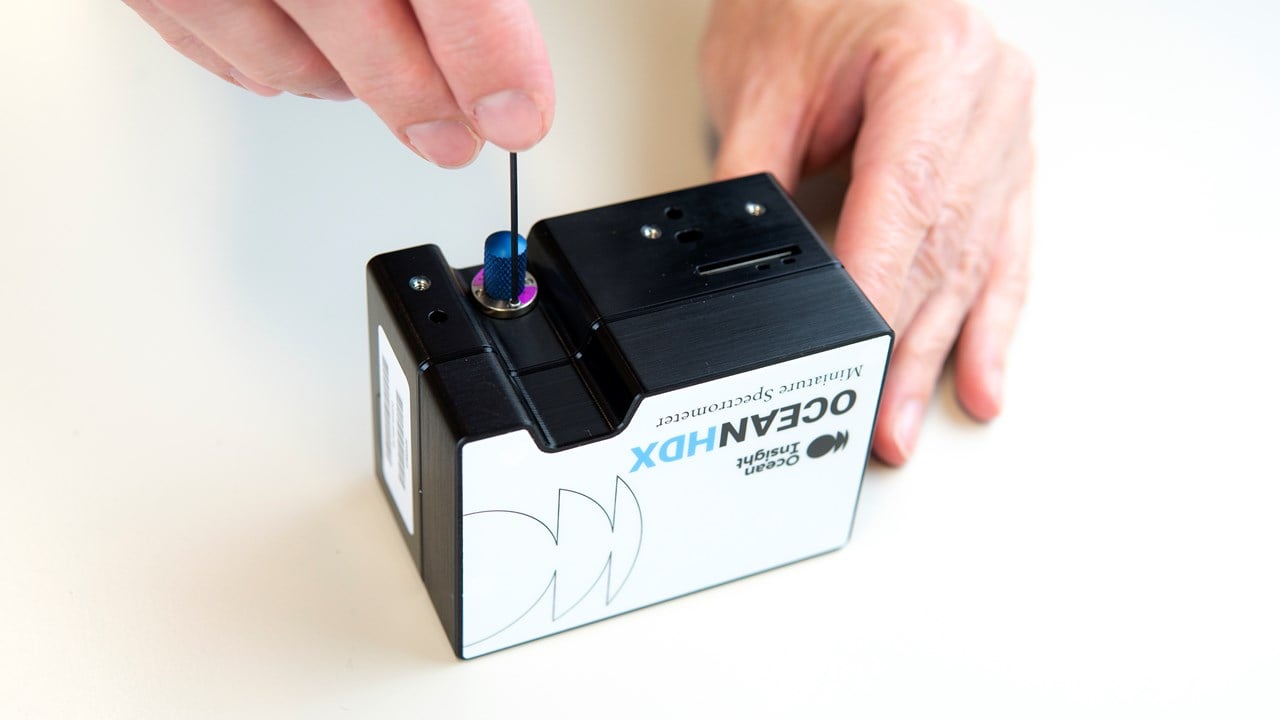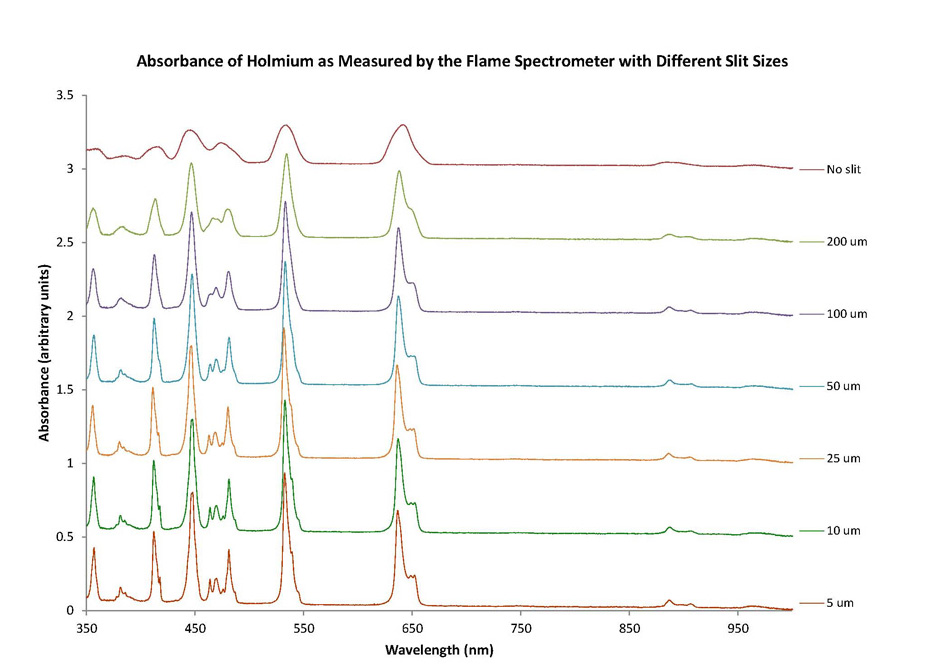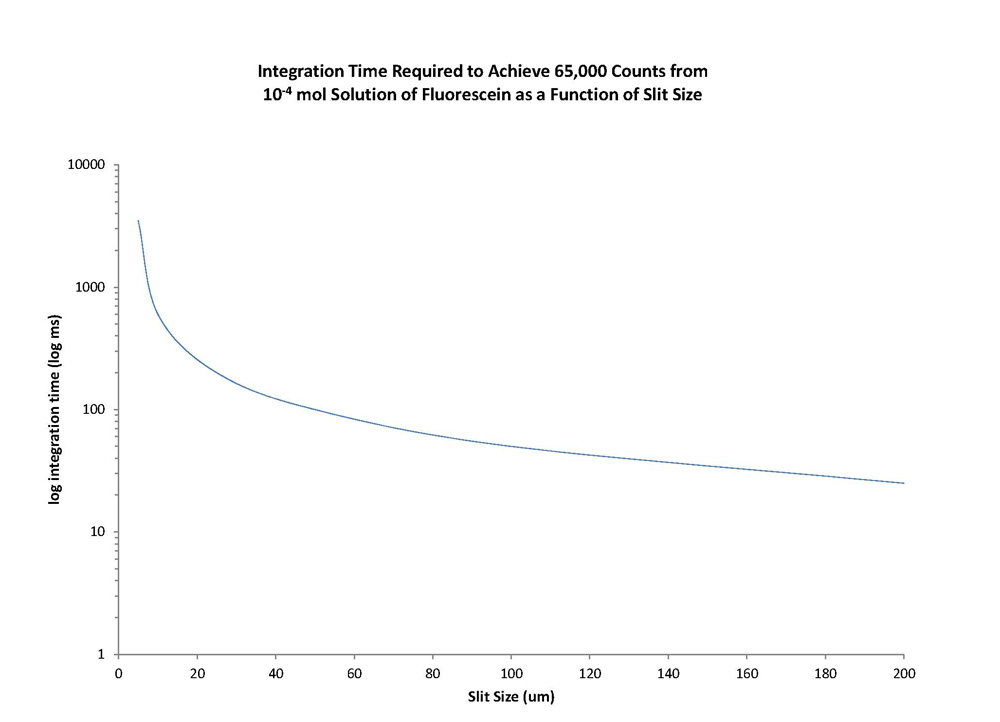Subscribe to Our Blog
Receive updates from our team as we share application notes, customer spotlights, educational tools, spectroscopy how-to’s, and more.

Modular spectroscopy makes possible thousands of applications by allowing users to combine optical bench components and accessories in various ways. Interchangeable slits in Ocean Optics spectrometers add more flexibility.
Spectrometer slit size is one factor that determines the optical resolution of your spectral system, along with the dispersion of the diffraction grating and the number of detector pixels. Choosing a slit size involves trade-offs: Select a larger slit width to increase throughput, but at the expense of optical resolution. Or select a smaller slit for higher optical resolution, but decrease throughput. The optimum choice of slit size requires weighing those two consequences, and depends heavily on the application.
The interchangeable slit design of most Ocean Optics spectrometers helps to eliminate design trade-offs, providing users with greater experiment flexibility. For example, you can specify a narrow slit for high resolution in sharp-peak absorbance measurements, but then switch to a wider slit for high throughput in fluorescence and low-light measurements.
This is a major advance from earlier generations of modular spectrometers, which required slit assemblies to be replaced by the manufacturer. For applications where managing a precise balance between throughput and optical resolution was essential, having to return the spectrometer for adjustment was inconvenient at best. Interchangeable slits eliminate those hassles.

Interchangeable spectrometer slits provide a great benefit to labs where users routinely perform absorbance and fluorescence measurements. For example, if you measure the absorbance of holmium oxide, which has narrow, distinctive peaks that require good resolution to be properly resolved, you’ll likely require a 25 µm or narrower slit (Figure 1).

Figure 1. A spectrometer using different slit widths measured absorbance of holmium oxide. Note the broadening effect on absorbance peaks as slit size increases. For presentation purposes, spectra were normalized in the y-direction.
But when an experiment is limited by signal strength or acquisition time restrictions – i.e., a short integration time is necessary -- high throughput becomes the most important consideration, and a 25 µm slit likely won’t work well in all circumstances.
This is the case with fluorescence measurements as the signal can be very low, especially at low concentrations of the fluorescent molecule. For example, fluorescent markers are used in low concentrations to enable authentication of a product. In such applications, the high throughput of the larger slit is more useful than the improved resolution of the narrower slit.
Figure 2 demonstrates the effect on spectrometer throughput as slit size is narrowed. With smaller slit size, the integration time required to measure the fluorescent molecule rapidly increases because the light that can pass through the slit has been greatly reduced. This can have very tangible benefits when speed of measurement is of high importance.

Figure 2. A spectrometer measured fluorescence of fluorescein in water. A logarithmic plot shows the integration time required to reach the optimum signal level as a function of slit size. The smaller the slit size, the longer the integration time that is needed.
With the interchangeable slit design of Ocean Optics spectrometers, users can adjust the spectrometer’s optical resolution and throughput performance simply by switching the interchangeable slits. Interchangeable slits give users more freedom in spectrometer design, with no need for spectrometer rework and realignment at the manufacturer’s facility.
Options available
Interchangeable Slits allow users to adjust spectrometer slit width on the fly and more easily manage measurement flexibility.
Prices From $259.00
Download the Quick Start Guide and follow easy steps how to change the slit on your spectrometer

Receive updates from our team as we share application notes, customer spotlights, educational tools, spectroscopy how-to’s, and more.